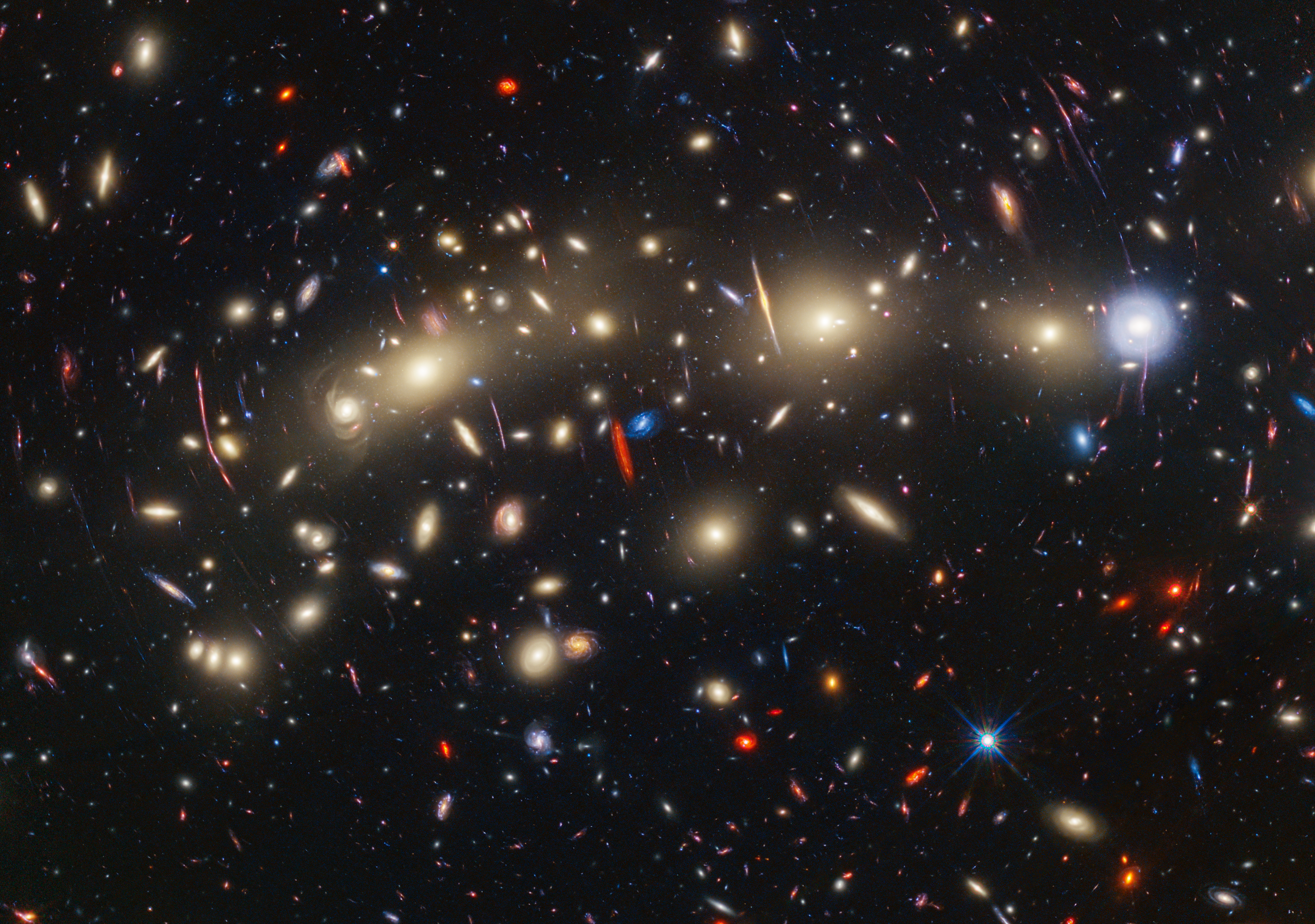Nasa reveals the most colourful picture of the universe ever made
By combining data from the James Webb and Hubble space telescopes, Nasa created an unprecedented image of a galaxy cluster

Your support helps us to tell the story
From reproductive rights to climate change to Big Tech, The Independent is on the ground when the story is developing. Whether it's investigating the financials of Elon Musk's pro-Trump PAC or producing our latest documentary, 'The A Word', which shines a light on the American women fighting for reproductive rights, we know how important it is to parse out the facts from the messaging.
At such a critical moment in US history, we need reporters on the ground. Your donation allows us to keep sending journalists to speak to both sides of the story.
The Independent is trusted by Americans across the entire political spectrum. And unlike many other quality news outlets, we choose not to lock Americans out of our reporting and analysis with paywalls. We believe quality journalism should be available to everyone, paid for by those who can afford it.
Your support makes all the difference.Nasa has released the most colourful picture of the universe ever made.
The space agency created the image by combining data from the James Webb and Hubble space telescopes to capture light that has never been seen before in one image.
The picture shows the galaxy cluster known as MACS0416, which is about 4.3 billion light years from Earth.
The reds, blues and bright yellows of the picture represent one of the most comprehensive views of the universe ever taken, Nasa said. The colours represent the wavelengths of light captured, going from the shortest in blue to the longest in red.
Those colours also help show the distances of those galaxies. Those galaxies that are closer and more active tend to be blue, while the red ones are further away – though some are also red because the vast amount of cosmic dust in the galaxy absorbs the blue of the light from stars.
It was created by gathering both visible and infrared light captured by both telescopes. The original imagery was taken by Hubble in 2014, which captured some of the faintest and youngest galaxies ever detected, and it was then combined with Webb’s infrared data to look even further into the early universe.
As well as making for a stunning image, researchers are already studying the data used to create it to examine the galaxy cluster and what it might mean for the universe as a whole.
The Webb observations can be used to find “transients”, which are objects that change brightness over time. In the image there are some 14 transients – most of which are likely to be individual stars that are becoming brighter, with a minority that are thought to be supernovae.
“We’re calling MACS0416 the Christmas Tree Galaxy Cluster, both because it’s so colorful and because of these flickering lights we find within it. We can see transients everywhere,” said Haojing Yan of the University of Missouri in Columbia, lead author of one paper describing the scientific results.
One of them in particular is notable, and has been named Mothra. The object is being magnified by up to 4,000 by a process called gravitational lensing – and is notable because it was in both the new Webb images and the original Hubble ones.
Scientists still don’t know how that could happen, since the alignment of galaxy clusters and stars needed to magnify something that much is delicate and would be expected to change. Scientists believe that the likely explanation is another unseen object that could be up to a million times bigger than our Sun and is unidentified.
“The most likely explanation is a globular star cluster that’s too faint for Webb to see directly,” stated Jose Diego of the Instituto de Física de Cantabria in Spain, lead author of the paper detailing the finding. “But we don’t know the true nature of this additional lens yet.”
The findings are detailed in two new papers, one to be published in The Astrophysical Journal and another that already appears in Astronomy & Astrophysics.
Join our commenting forum
Join thought-provoking conversations, follow other Independent readers and see their replies
Comments